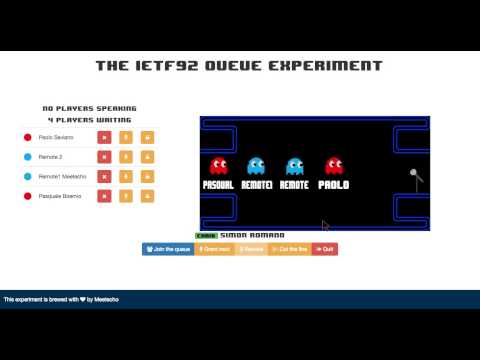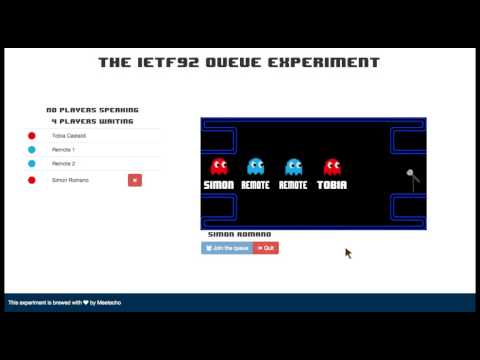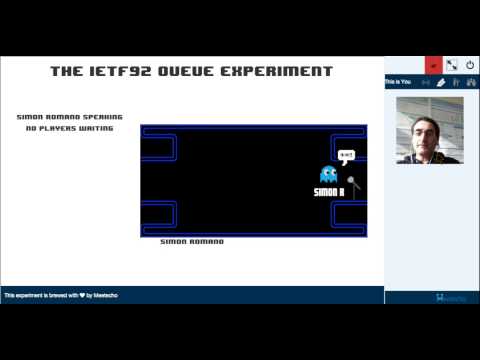
UMPIRE, as the name itself suggests, is a system aimed at providing a real-world demonstration of the seamless interaction among remote and local participants at regular IETF meetings.
As you may know, the team at Meetecho has been working on ways to improve the ability for remote attendees to actively participate in IETF working sessions. One of the greatest challenges is the integration of remote attendees into the in-room queue or “mic line.” Traditionally, a remote participants ask their questions into the jabber room and then an in-room volunteer will go to the mic line and stand for them, relaying their question into the room when they get to the front of the mic line. Unfortunately, this often leads to a long lag between the time when the remote participant “asks” the question and the time when their question is injected into the meeting room.
Meetecho has put together a couple of experiments for IETF 93. In case you're interested in participating in these experiments, visit this page for some info on how to do so. The following sections will instead explain how the experiments are conceived to work.
Experiment 1
Two queues — a virtual queue and an actual (in-room) queue
Remote attendees will log into the Meetecho platform and will have a virtual mic line that they can enter if they have a question or comment. In-room participants will continue to use normal mic lines. This means that there will be a minimum of two queues — one physical in-room queue and one virtual — and the chair (or delegate) will need to move back and forth between the two, giving people turns. When someone in the virtual queue has a turn, Meetecho will inject their audio the room so that they can speak directly to/with everyone in the actual meeting room.
Experiment 2
One queue — a unified mic line for both in-room and virtual participants
With this experiment, all attendees will be in the same queue. Everyone will use a web interface to get in the “mic line.” No moderation between different queues is required, since there is only one queue. And for in-room participants, it means that they don’t have to stand until it’s their time to speak. However it does require that everyone in the meeting room is willing to use a web interface to join the queue. When someone in the virtual queue has a turn, Meetecho will inject their audio into the room so that they can speak directly to/with everyone in the actual meeting room.
If you want to play this game with us in Dallas, there are three different roles you might be covering:
- Chair (i.e., queue moderator) —> view tutorial on Youtube:
- In-room participant —> view tutorial on Youtube:
- Meetecho remote participant —> view tutorial on Youtube:
That's all folks!



